
Table of contents
- formation of algae
- Typical characteristics
- causes
- When thread algae become a problem
- Fix the cause instead of fighting the symptoms
- Combat thread algae with the help of nature
- Other preventive measures
- Worth knowing about thread algae in the pond
Almost every owner of a garden or swimming pond has already encountered algae. Many types are unsightly, undesirable and spoil the aesthetic impression of the pond. Nevertheless, algae are regarded as oxygen suppliers and are therefore a natural part of the ecological system in the pond.
formation of algae
Since algae are contained in fine dust, they colonize every water point in a short time. Therefore, you can find them both in the garden pond and in the swimming pond. If the right concentration of nutrients is given in the water, they live peacefully together with other inhabitants of the pond. They serve as a source of food for microorganisms and provide oxygen. However, if there is an excess of nutrients in the pond, this can favor the living conditions of the algae. The result is a strong multiplication. This lightning surge in algae is called an algal bloom.
There are thousands of types of algae, depending on the quality and composition of the water. In general, there are two large shapes in particular that can make life difficult for pond fans. One of them is the thread algae. They mostly swim on the surface of the pond or grow on stones and plants. The long-threaded green algae show themselves:
- cobweb-like
- cushiony
- nationwide
- tufted,
- fur-like or cotton-like or
as thin, long, unbranched or branched threads.
Typical characteristics
Filamentous algae spread very quickly. They swim either all over the pond or like cotton wool on the surface of the pond and grow in clusters on stones, decorative objects and plants. The thin threads, up to 20 cm long, are characteristic. Furthermore, even water temperatures of around 5 °C do not prevent thread algae from multiplying. The unwelcome plants clump together in all water depths and clog filter systems. The smallest creatures and fish can get caught in it. This form of algae occurs particularly often in alkaline water.
causes
The excess of nutrients is one of the many reasons for the rapid multiplication of this type of algae. Natural factors include:
- dying plant parts and remains
- rotted autumn leaves on the pond bottom
- too few aquatic plants
- excessive fish stock
- lack of oxygen
- no water circulation
- nitrate rainwater
Furthermore, the following factors can negatively influence the nutrient concentration:
- missing filter system
- Garden soil as a substrate for the plants in the pond
- garden soil washed into the pond
- pollen count
If you feed your fish in the pond too generously, you will also promote the growth of the long-filamentous green algae. Because the excess of food decomposes in the water. The concentration of nutrients is also influenced by too many fish stocks and the associated fish excrement. A high level of solar radiation leads to the pond heating up, especially in small ponds. This creates the living conditions for this type of algae. A naturally heated and nutrient-rich biotope allows the unwelcome plants to thrive optimally.
Filamentous algae die off over time and sink to the bottom of the pond. There they are decomposed by bacteria, fungi and microorganisms. As a result, the stored nutrients such as phosphate and nitrogen are released again and thus promote the growth of new thread algae. Since a large amount of oxygen is required for this process, the content in the water drops very quickly. The result is a risk of suffocation for fish and other organisms. In this state, the pond has reached a point where first aid is required.
When thread algae become a problem
Anyone who discovers thread algae in the pond can, as a first step, fish them out of the water with a roughened, unpainted stick, landing net or similar. With circular or rotating movements, the thread algae wrap themselves around the stick and can be easily removed.
If the algae have already settled on the surface of the water in the pond like a cushion, it is no longer sufficient to fish them out. As a rule, almost all garden owners then resort to chemical agents. Special water additives destroy the filamentous green algae quite easily, but this does not last forever. The algae will come back next year at the latest. Therefore, the chemical bludgeon method is not necessarily sustainable. Apart from that, chemical agents do not only change the pond water. Fish and microorganisms can also suffer damage to their health.
Fix the cause instead of fighting the symptoms
In the long term, pond owners should not rely on chemical agents, but rather find and eliminate the cause of the unchecked growth of the unwelcome plants. In most cases there are two factors that are responsible for the tipping of the pond. On the one hand there is too much solar radiation and on the other hand the over-fertilization of the water - two optimal components for breeding filamentous algae.
Combat thread algae with the help of nature
To curb the growth of unwelcome plants, pond fans can use floating plants. This deprives the algae of light. Aquatic plants that grow quickly are just as helpful because they draw a large amount of nutrients from the water. If the pond is in a friendly and bright place, tall grass on the bank of the pond will provide the necessary shade. If you also reduce the flat shores of your pond and avoid hard water, you also prevent thread algae.
Other preventive measures
The long-filamentous green algae are sun worshipers. The more sun they get, the faster they grow. For this reason, a partially shaded location should be chosen when planning the pond. However, it does not make sense to create the pond under shade providers such as large trees. Many garden owners build their pond at the lowest point in the garden. Fertilizers can also get into the pond with the rainwater. This not only promotes algae growth, but soon makes the pond look as green as the owner would like the lawn to be. That being said, the depth of the garden pond also plays a significant role in nutrient issues. As a rule, the pond should be at least 1.5 meters deep. This is the only way the water cannot heat up excessively.
Worth knowing about thread algae in the pond
If annoying thread algae spread in the garden pond, it is very annoying for most swimming pond owners. That's why you should pay attention to a few things before you start your new one creating a swimming pond:
- When planning the pond, care should be taken to ensure that it does not lie in the blazing sun all day.
- If the swimming pond already exists and has been given a fairly sunny spot, it should be shaded afterwards.
This is possible without any problems, for example by planting tall grasses or trees along the banks, which also create a nicer ambience around the pond. But also the use of floating plants that float on the water surface provides additional shading of the swimming pond.
- Likewise, one should take precautionary measures on fast-growing aquatic plants To fall back on.
- If you only use very slow-growing plants, you run the risk of thread algae multiplying.
Because the slow-growing plants leave too many nutrients in the water, which in turn ensure better growth of the thread algae. The waterweed, for example, is particularly well suited to protect the swimming pond or to extract nutrients from the water and thus prevent excessive growth of thread algae.
- Furthermore, one should not keep the fish stock too high. Too many fish also provoke the growth of thread algae.
- If the fish are fed, only very small amounts should be introduced. The fish should be able to eat these within a very short time.
In autumn, the swimming pond must always be covered with a net. Leaves and other rubbish cannot get into the swimming pond and therefore neither can the water enrich with nutrients, which would lead to increased growth of the hated thread algae.
 garden editorial
garden editorial I write about everything that interests me in my garden.
Learn more about algae in the pond
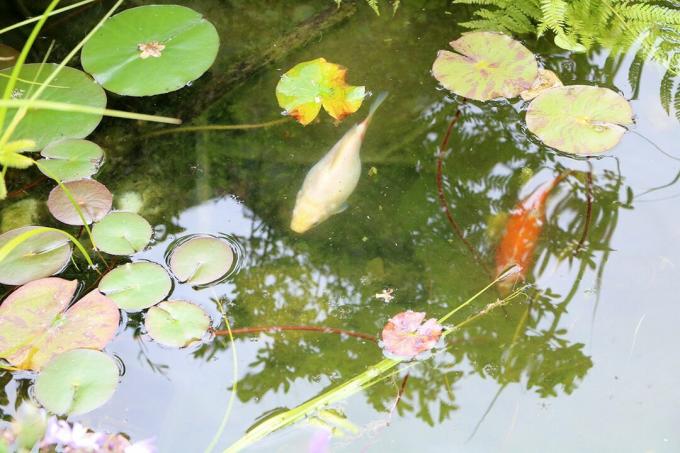
Floating algae in the pond: 10 tips for removing them
Algae infestation is not only unsightly to look at, but can also pose a threat to aquatic animals and plants. For this reason, it is advisable to always remove floating algae - read here how this works best!
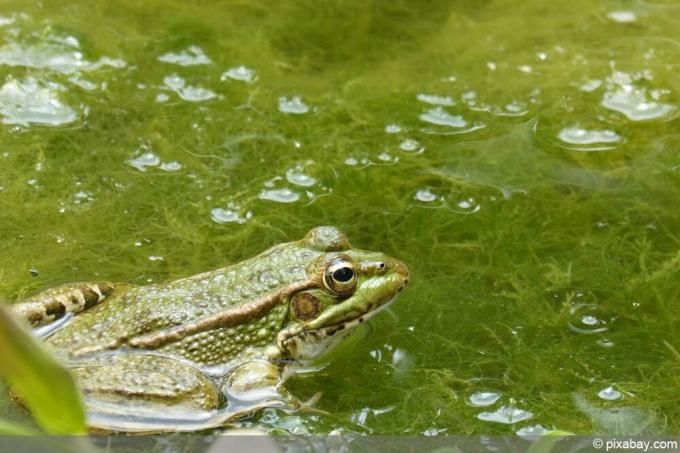
Algae eater in the pond: 5 hungry pond fish
Algae growth in the garden pond not only looks unsightly, but excessive growth can tip the entire ecosystem over. In this article we will tell you which types of fish, snails and mussels like to eat algae and what else helps against the "green plague".
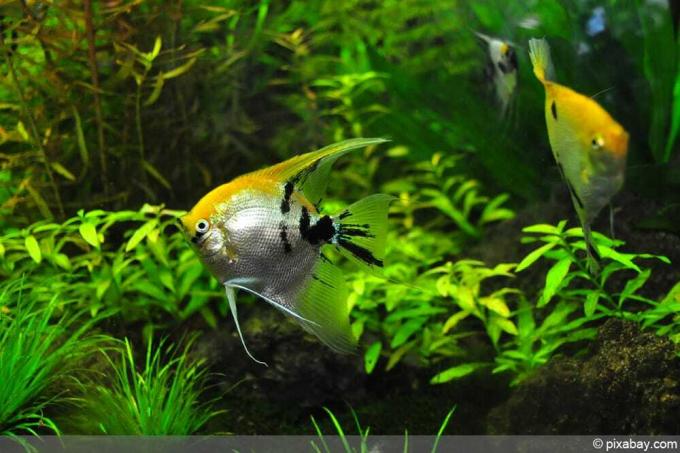
Combat thread algae in the aquarium
The right countermeasures must be taken at an early stage to ensure that the thread algae in the aquarium do not grow too rampant and become a nuisance. Otherwise, the aquatic plants can severely disturb the sensitive ecosystem of the aquarium and also negatively affect the visual appearance.
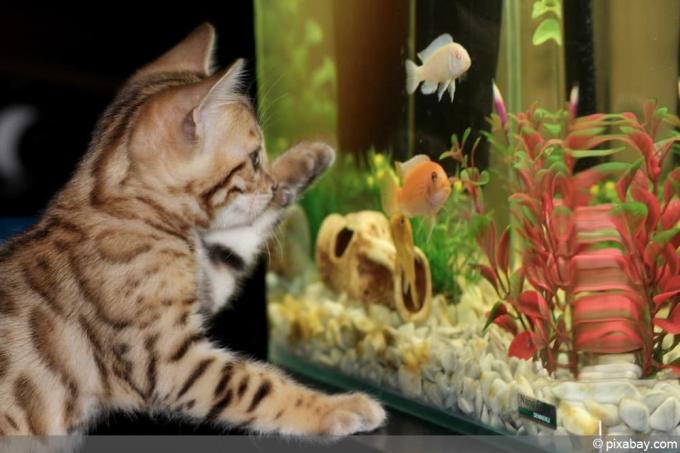
Get rid of green algae in the aquarium properly
Green algae occur in every aquarium. This is normal and part of it. It can even speak for a particularly good water quality. Only a massive increase in algae caused by too much light and too many nutrients is not normal. The green coloring and turbidity of the water means nothing other than that the biological balance has gotten out of joint. There are different green algae, also with quite different requirements. However, all benefit from an excess of food and can best be combated by depriving them of food.
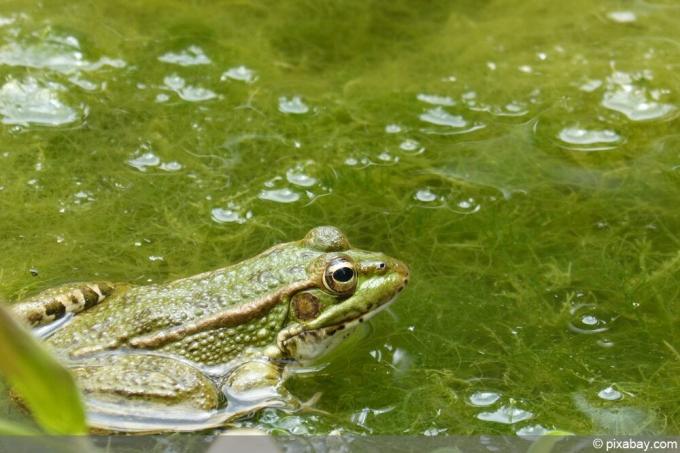
Natural remedies against thread algae
Algae in the garden pond are an absolute nuisance, but can hardly be avoided. Besides, they are useful too. They serve as food for microorganisms and also produce vital oxygen. It gets annoying when they multiply en masse.

The best home remedies for algae in the aquarium
Algae in the aquarium are absolutely natural and normally do not have to be fought. It only becomes difficult when they multiply explosively. There is a reason for this increase. It has to be found and turned off. That sounds simple, but it isn't.


